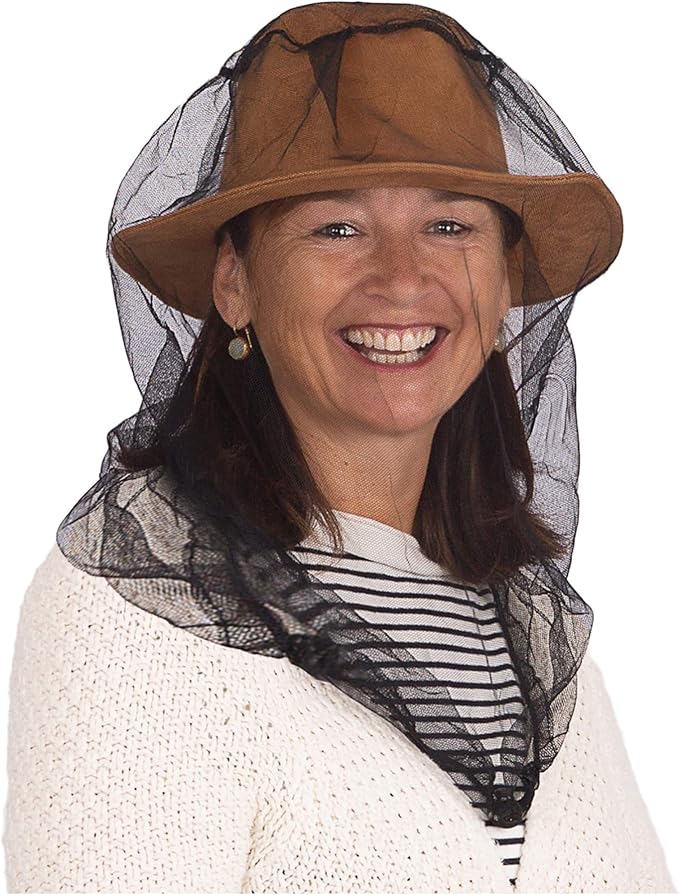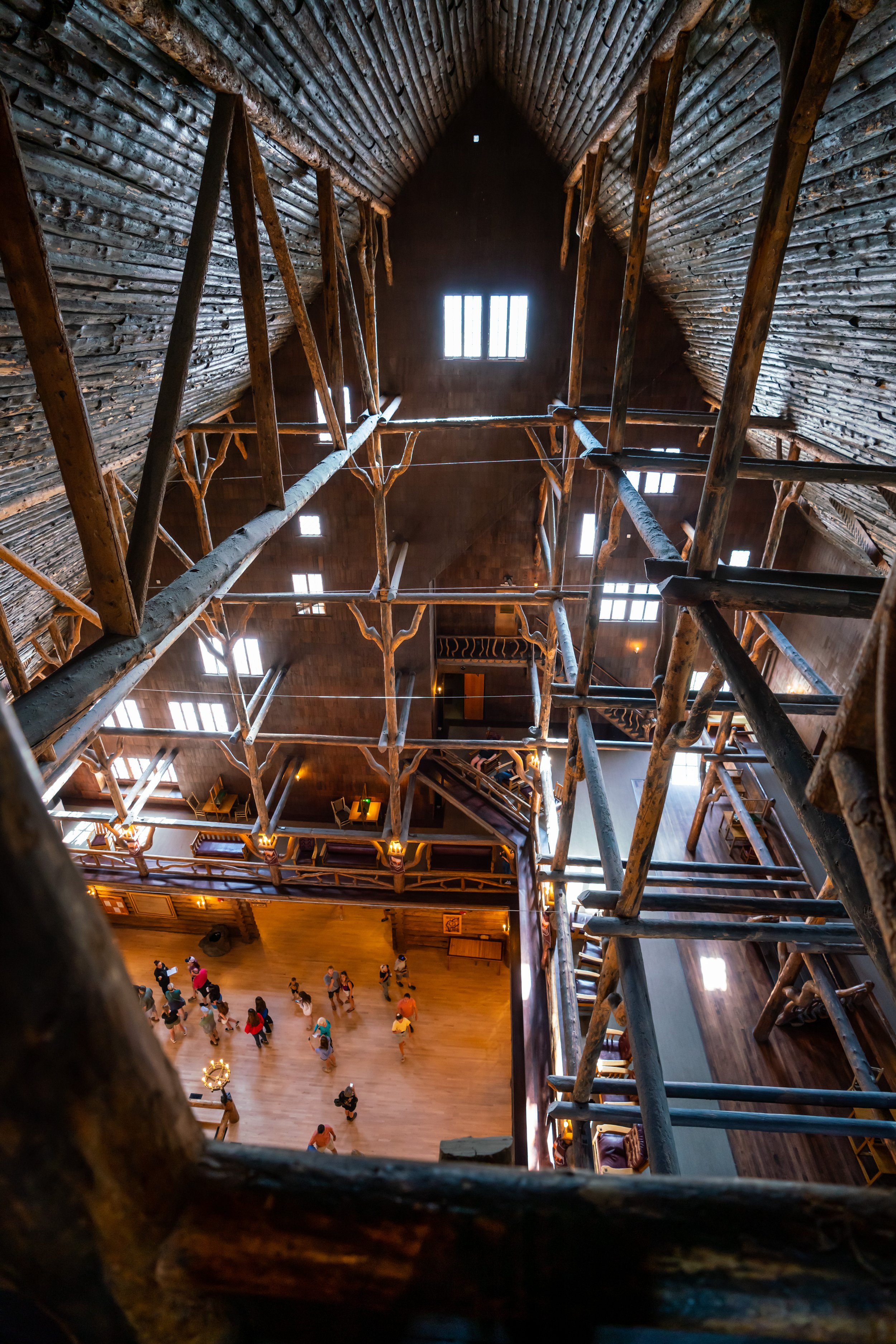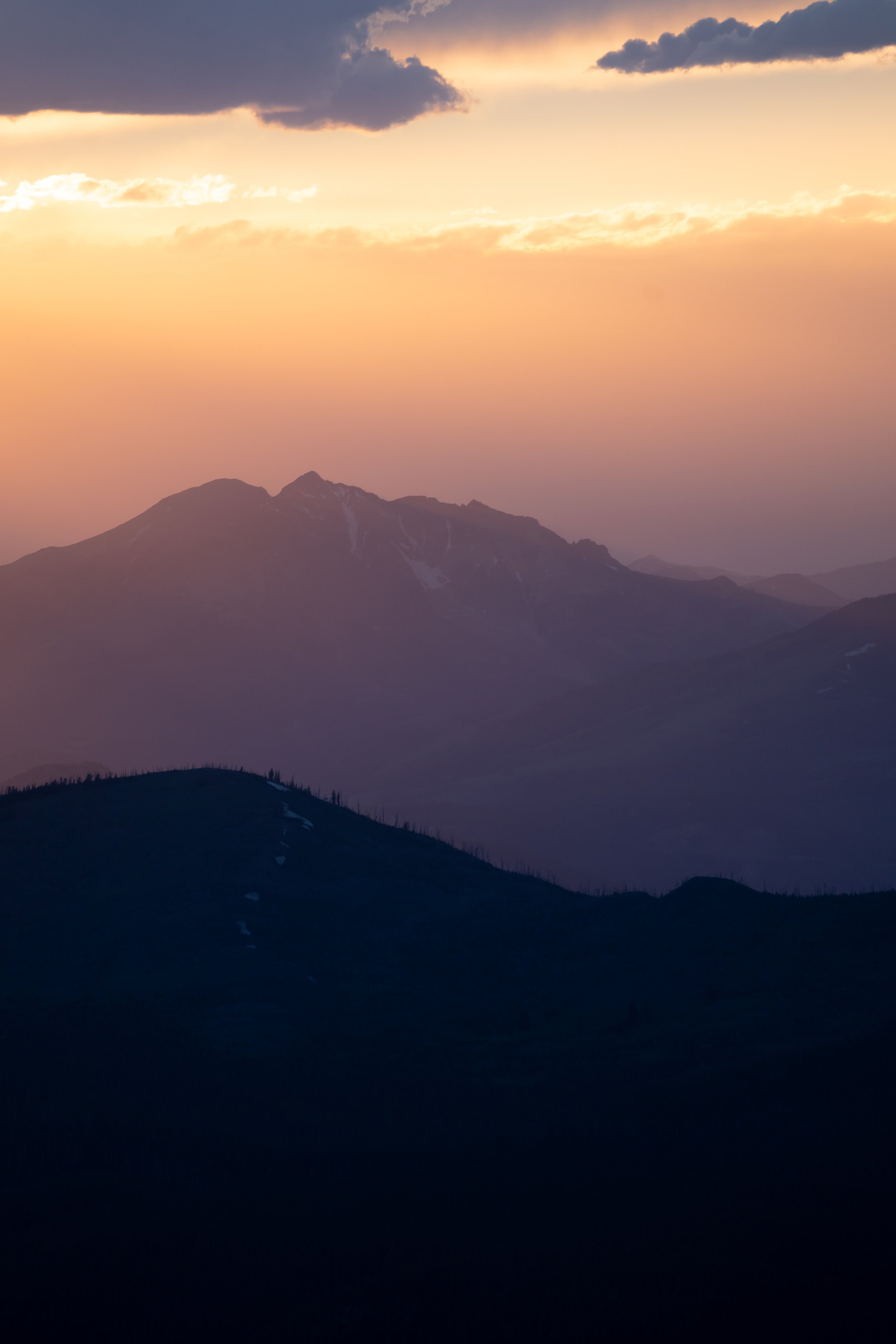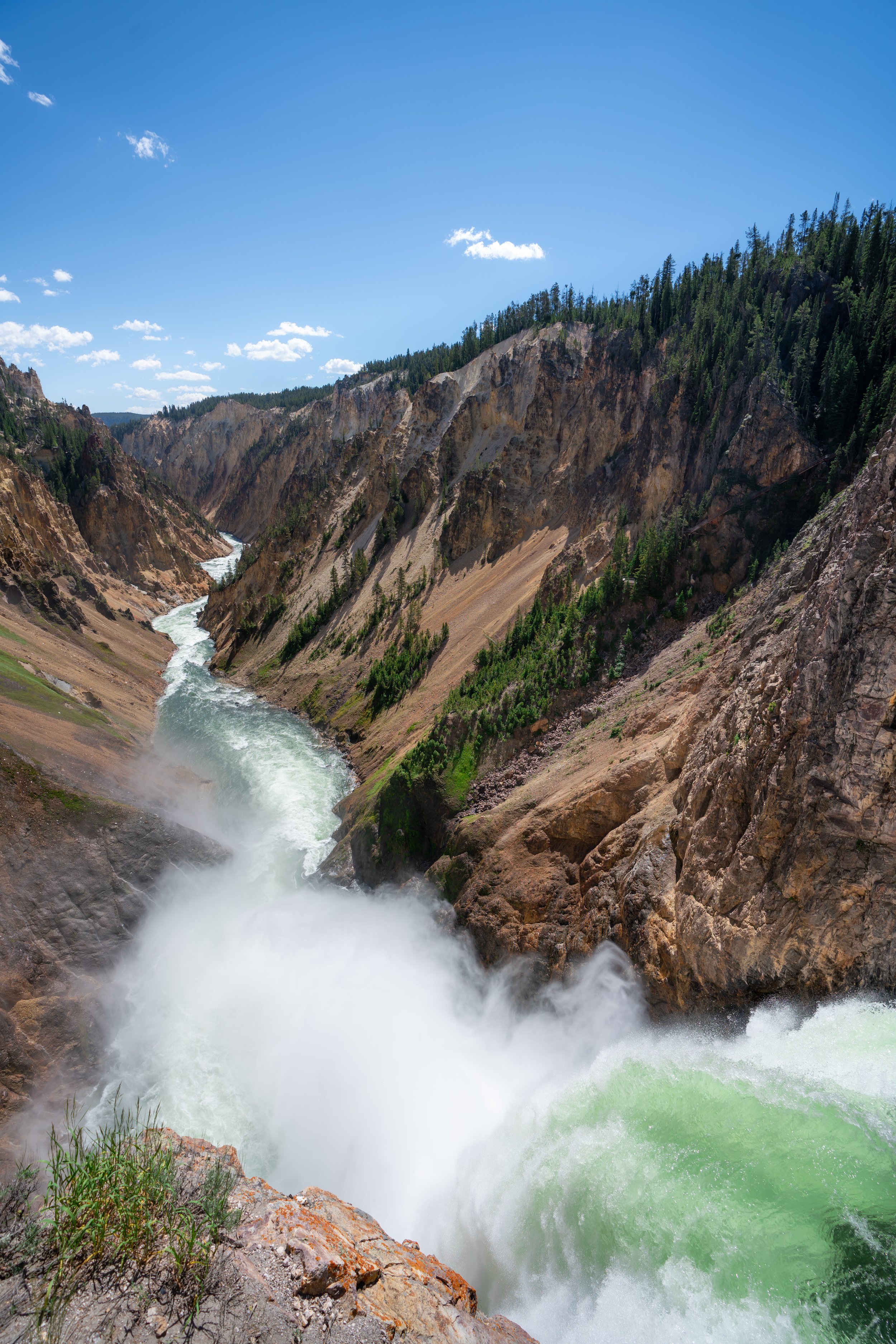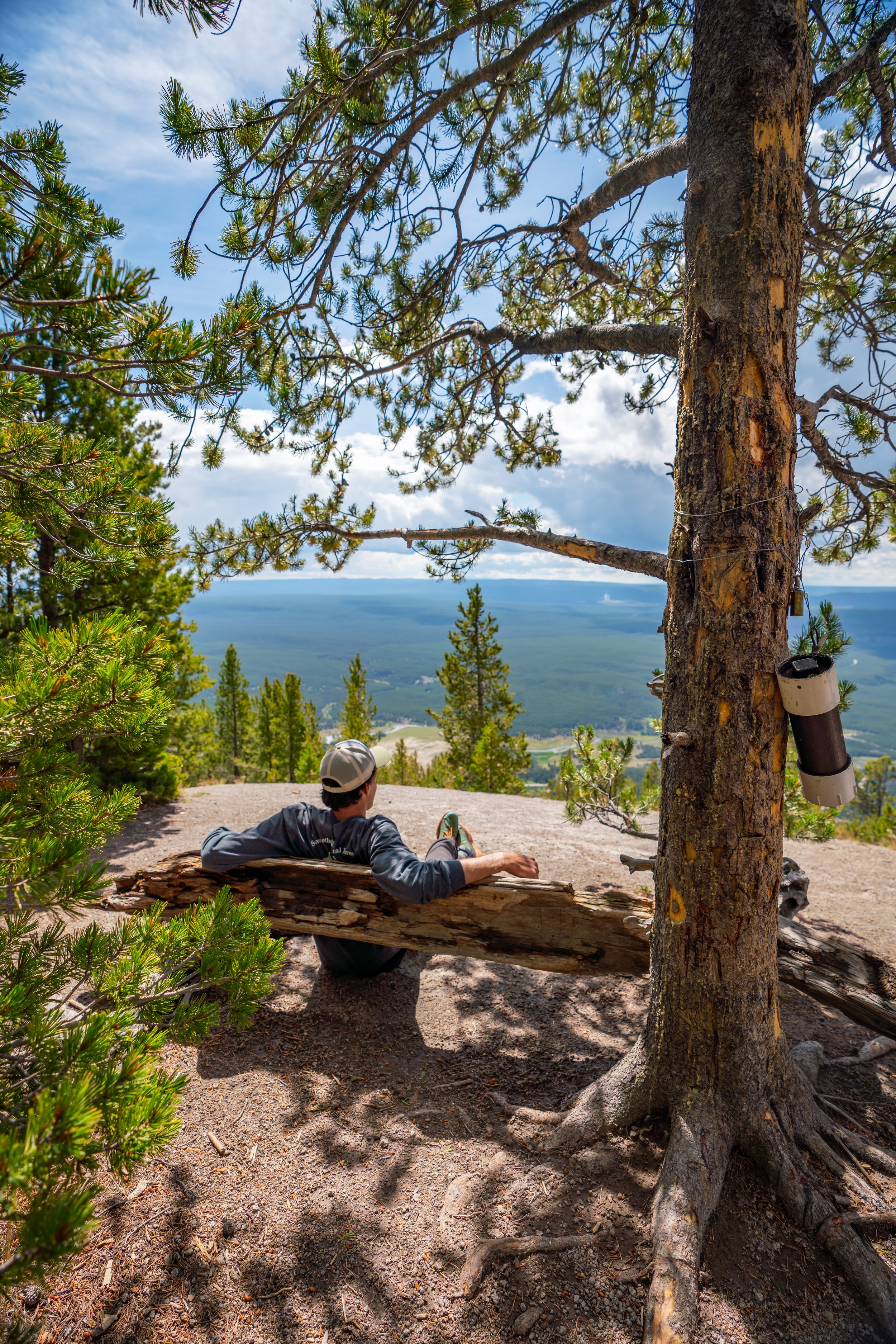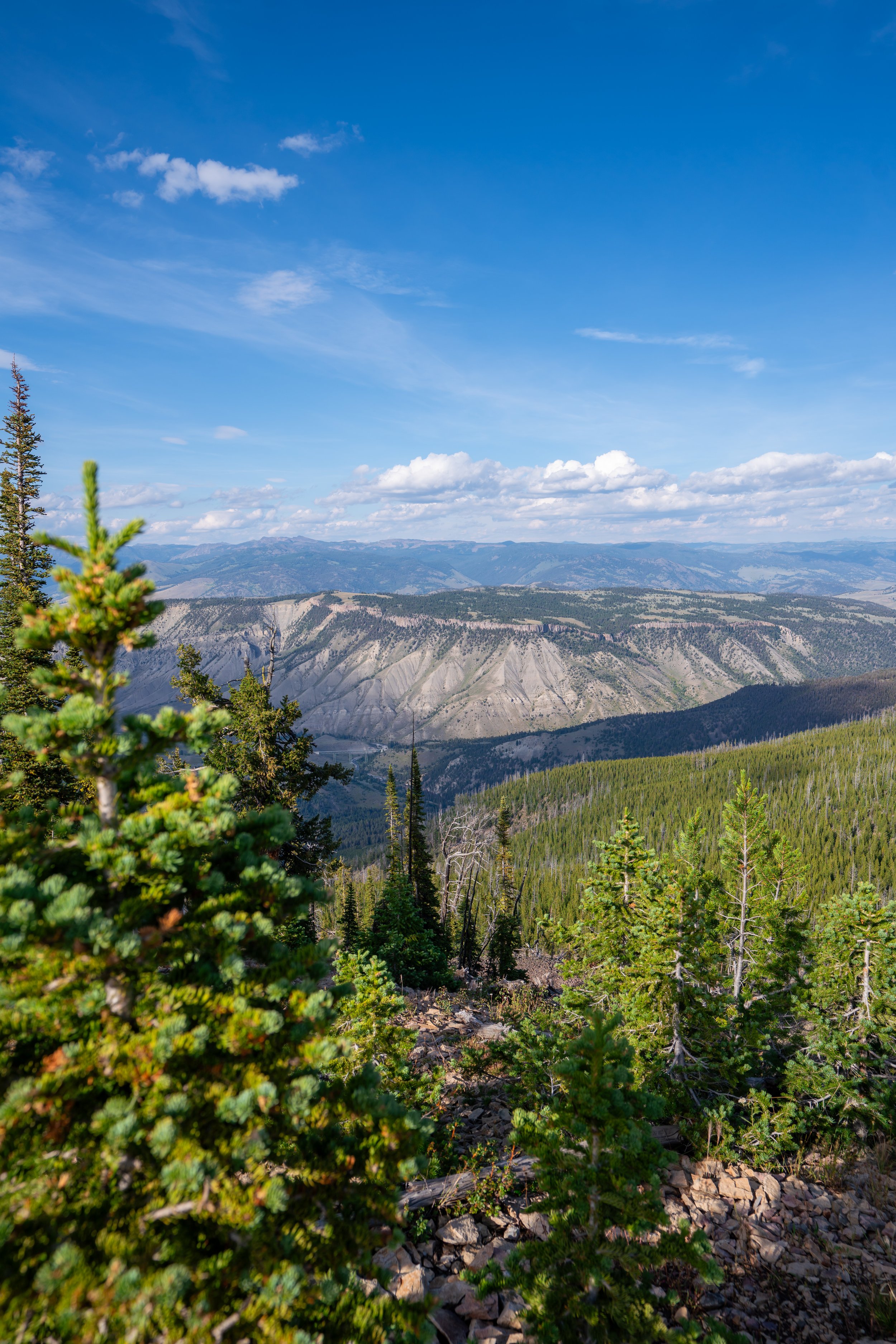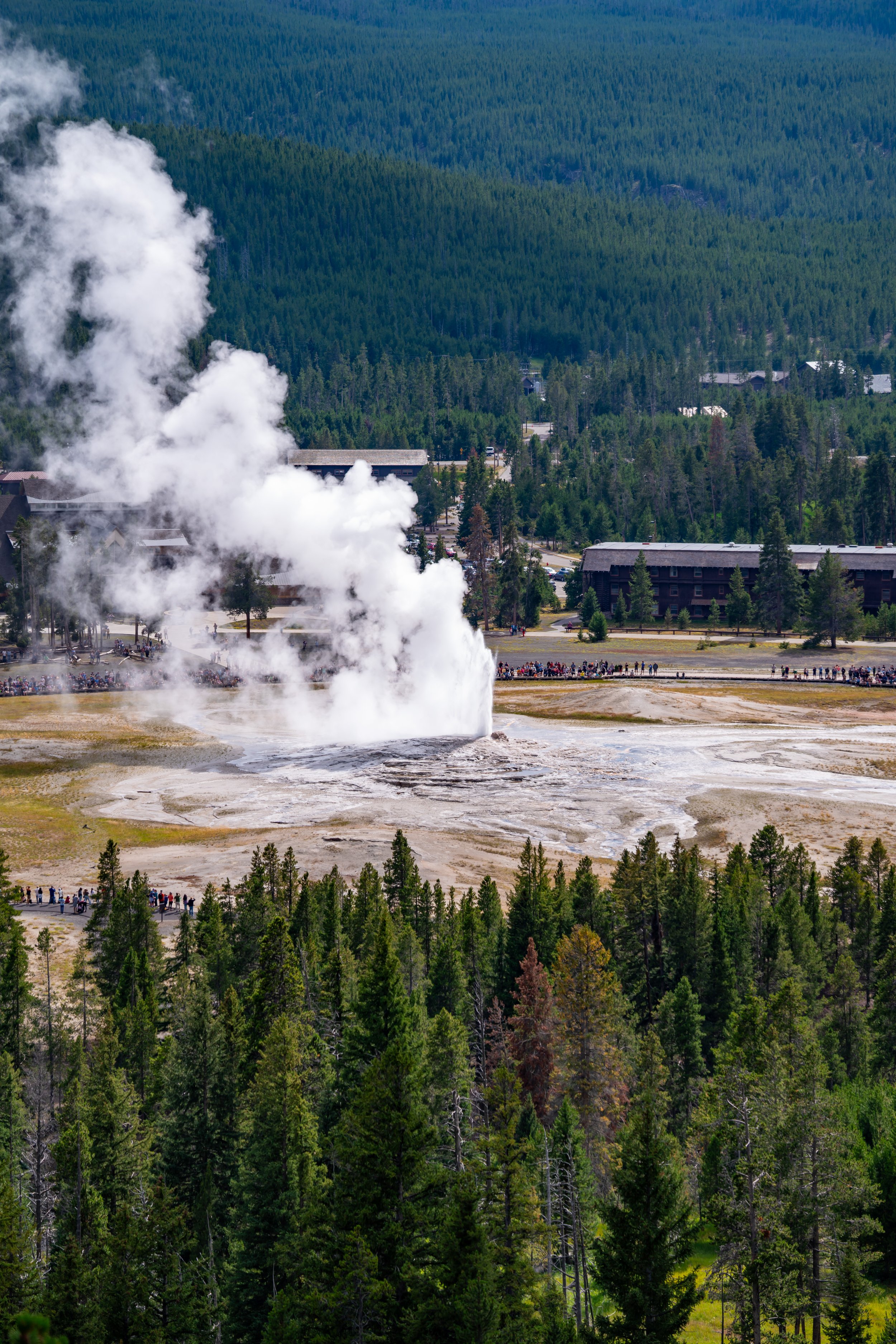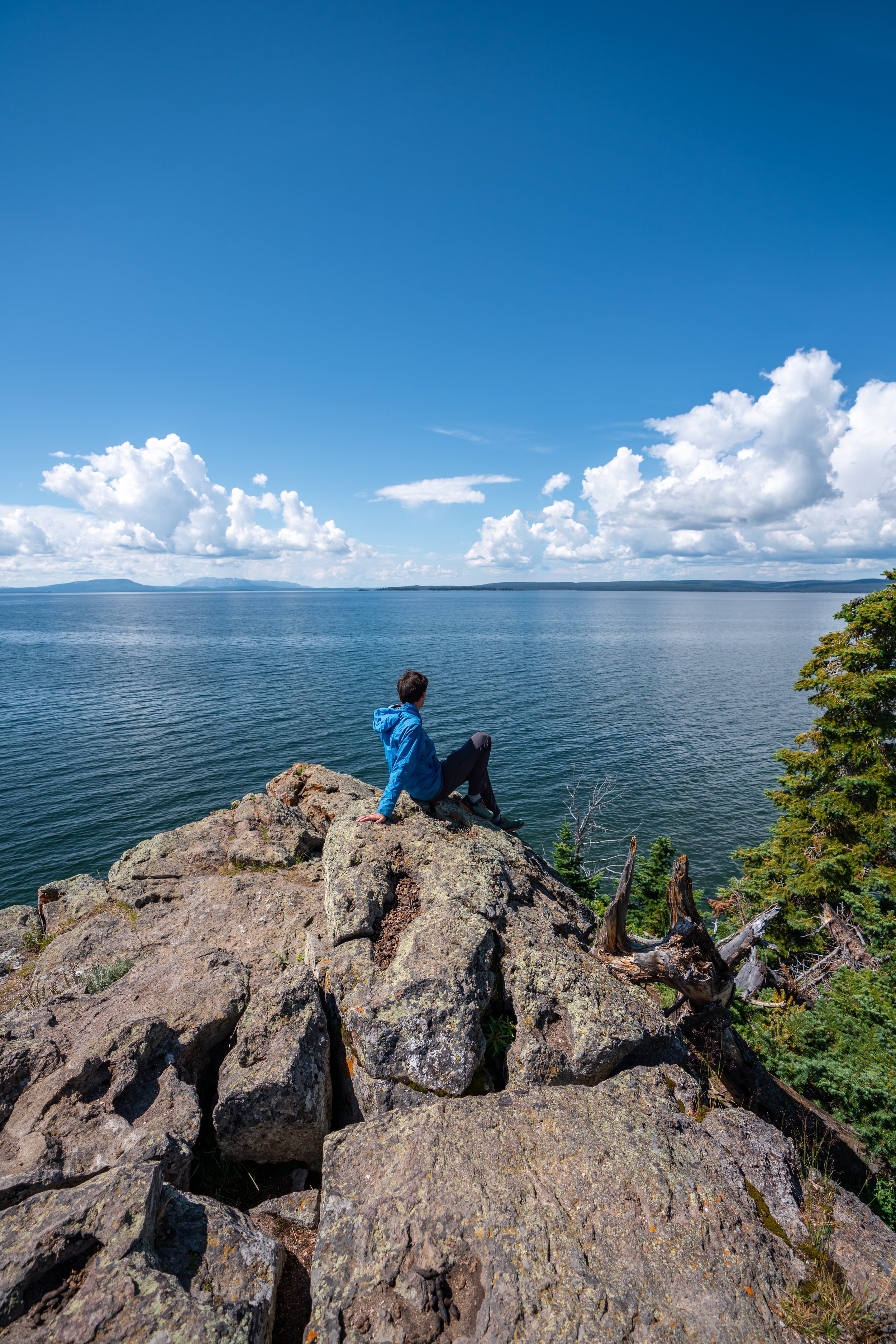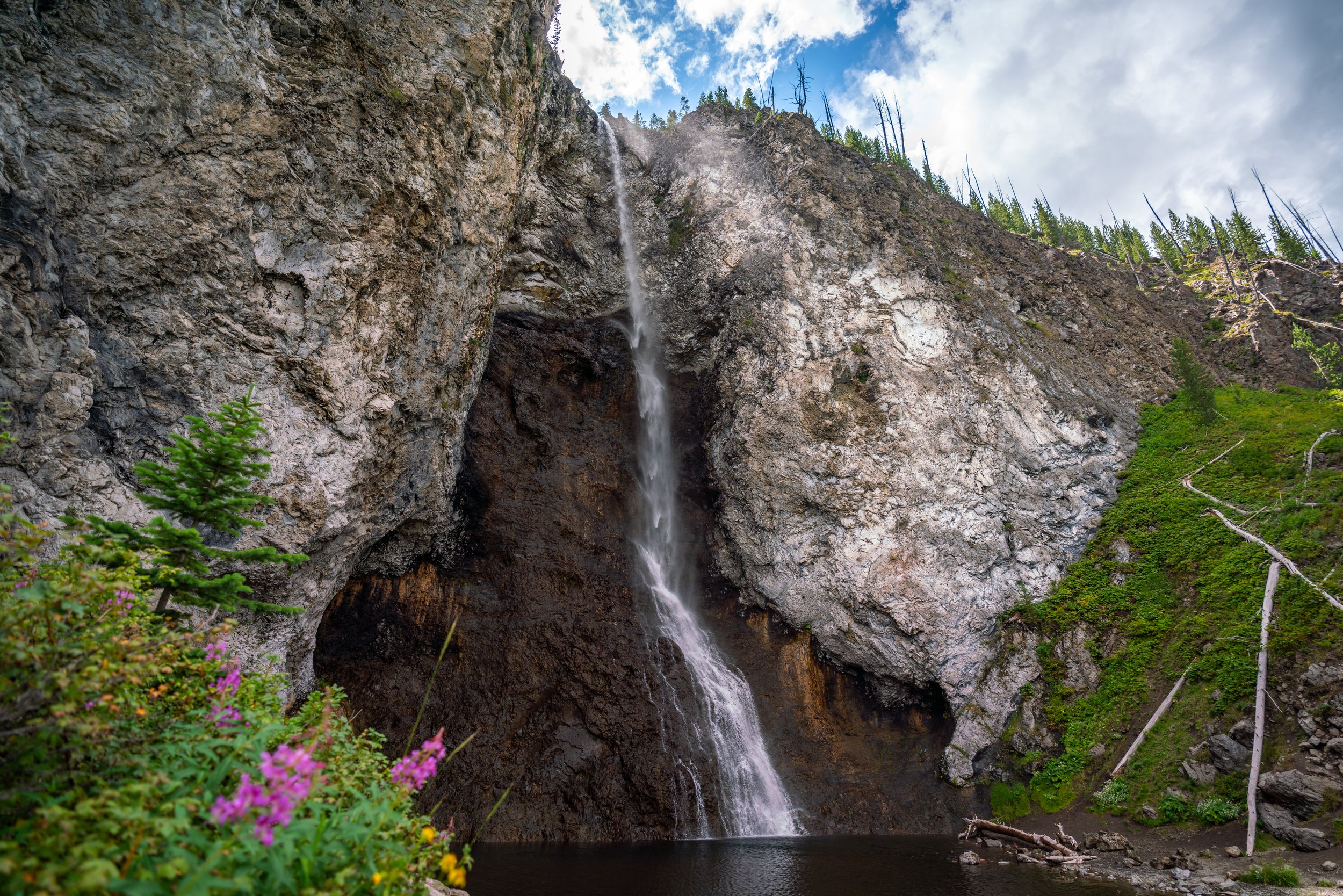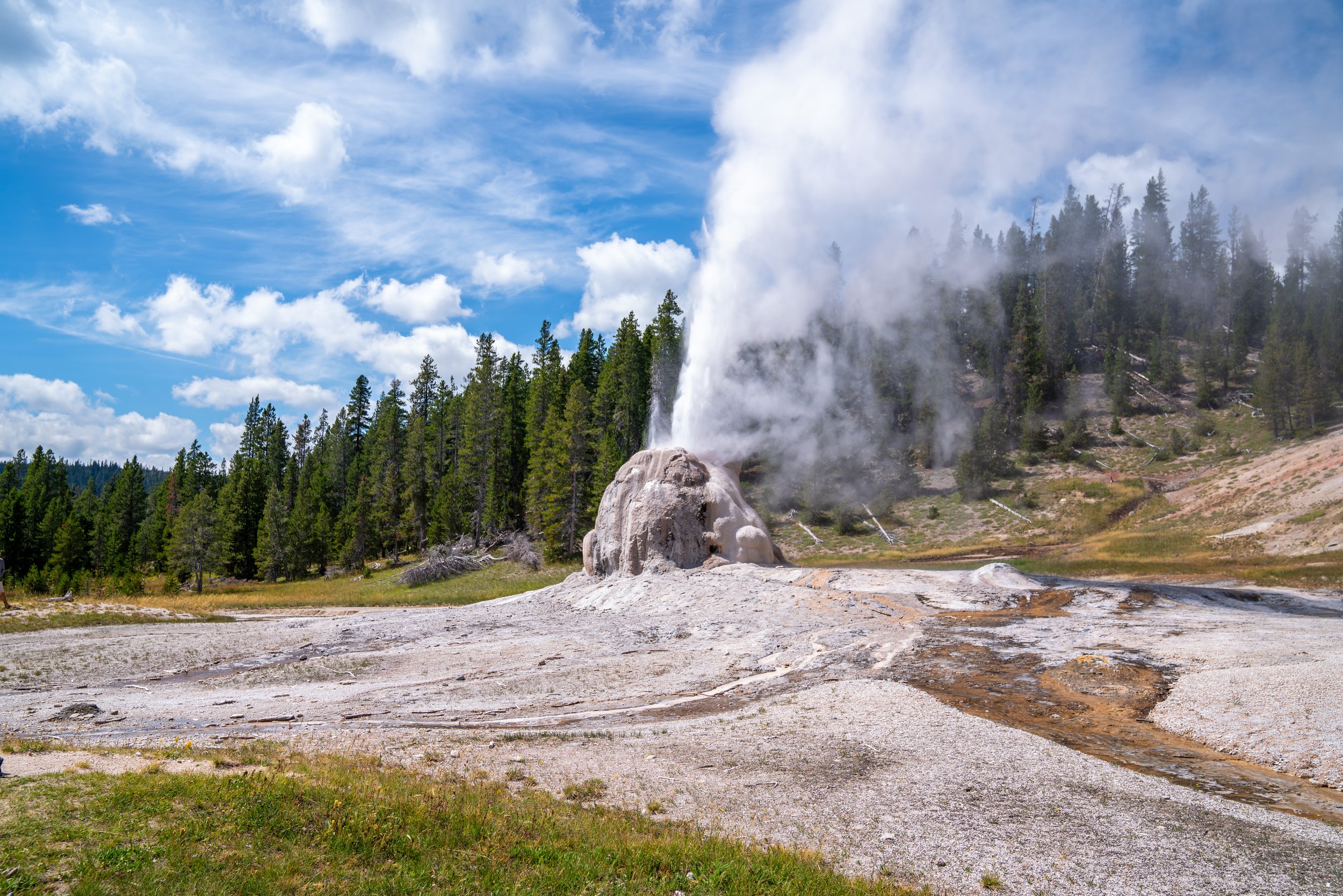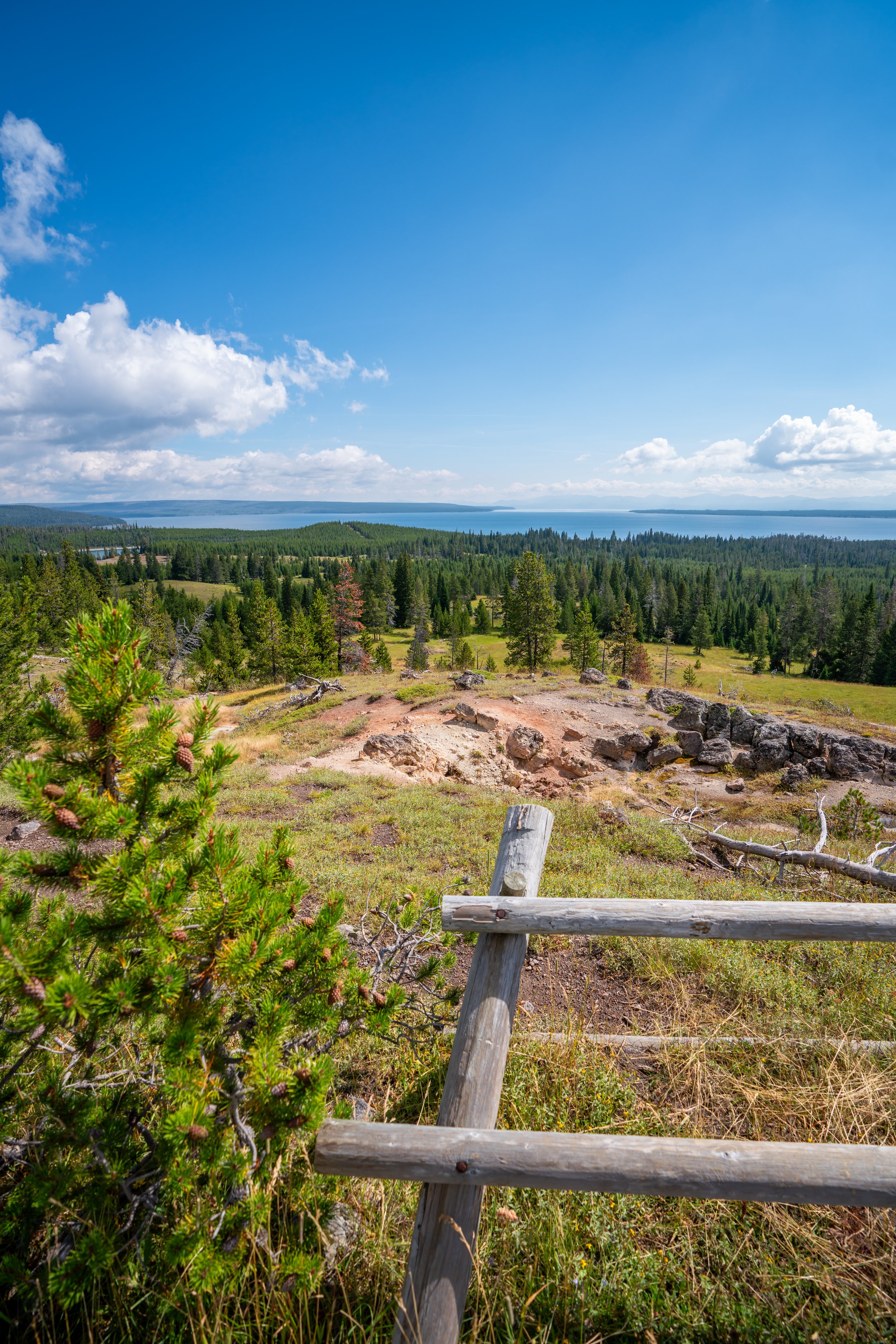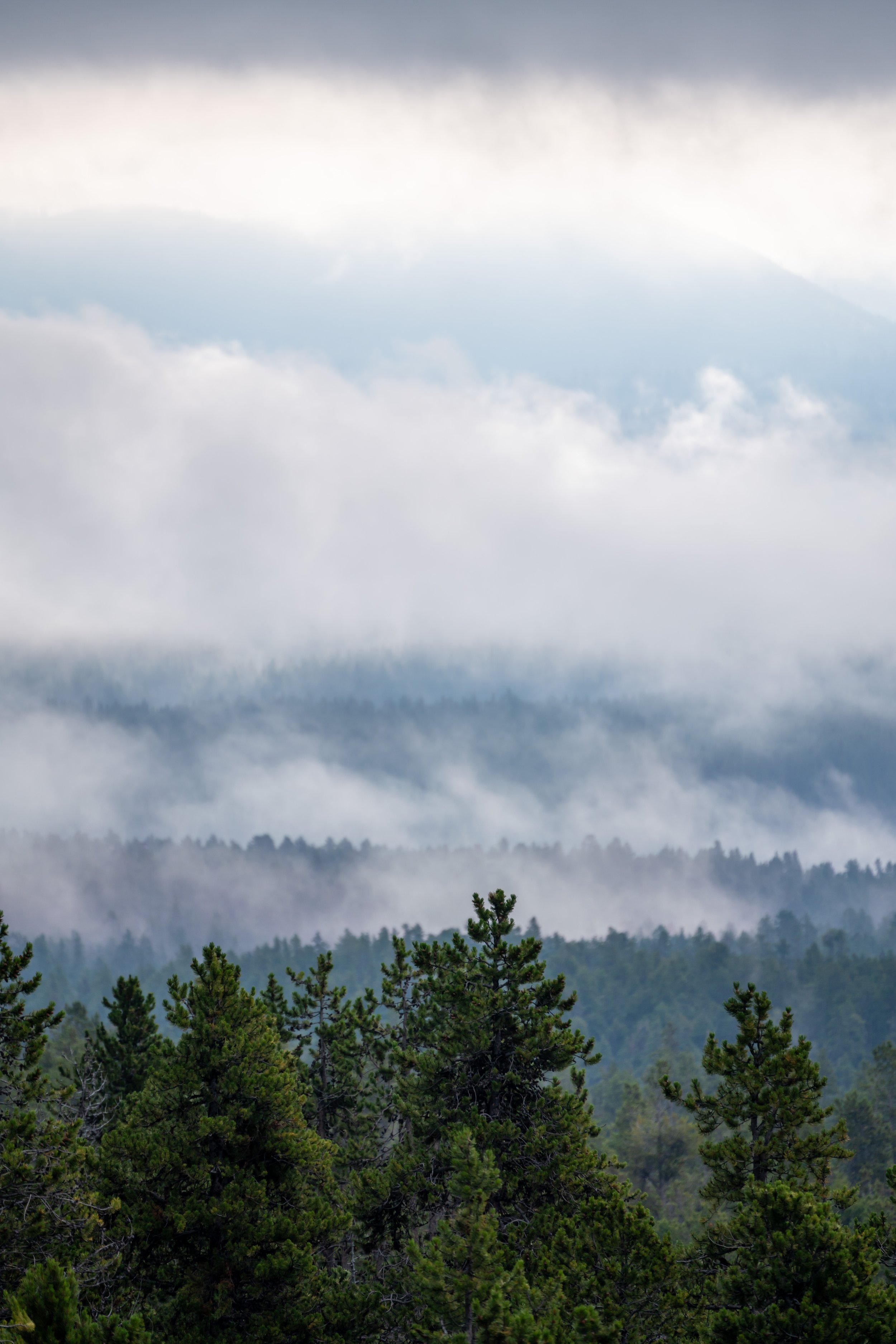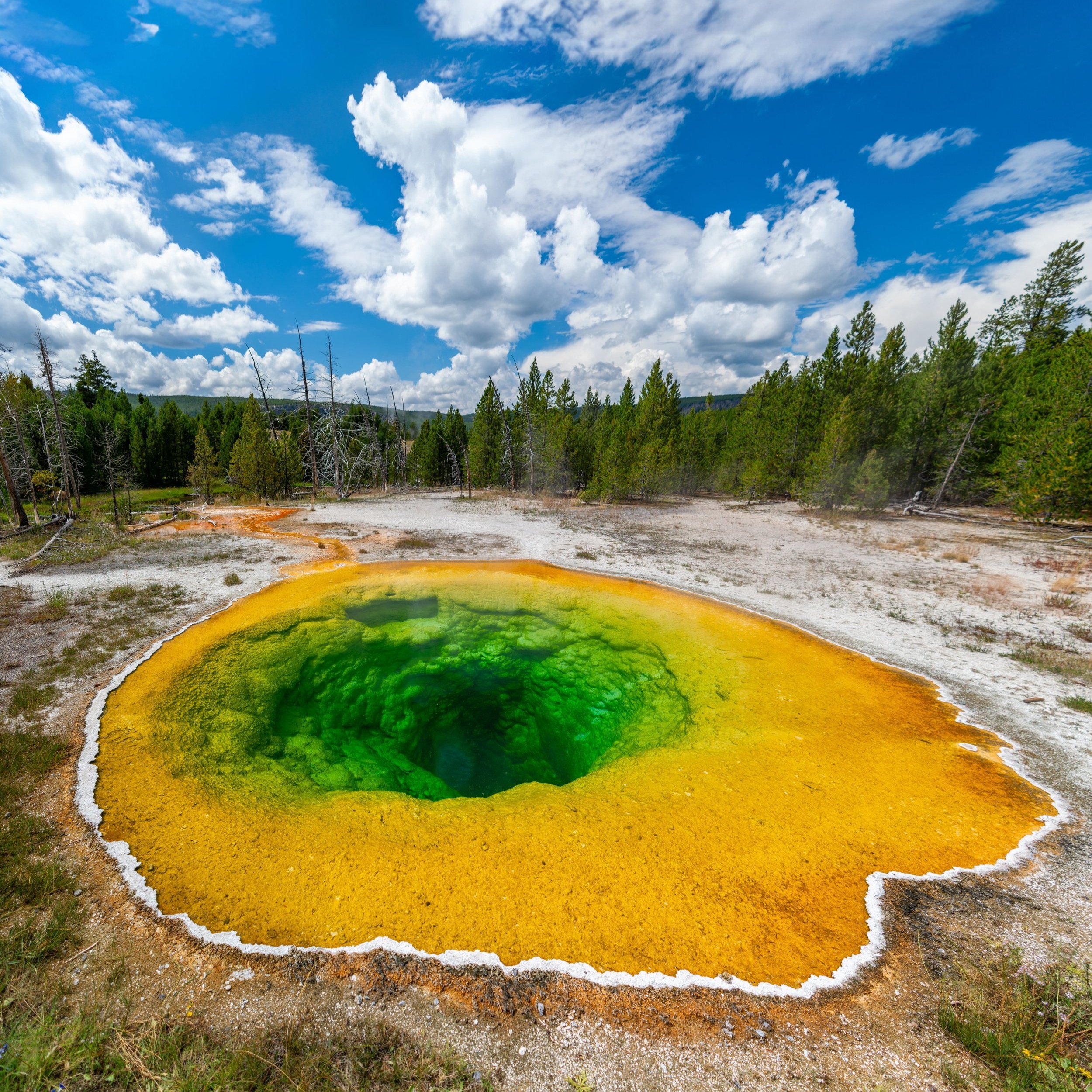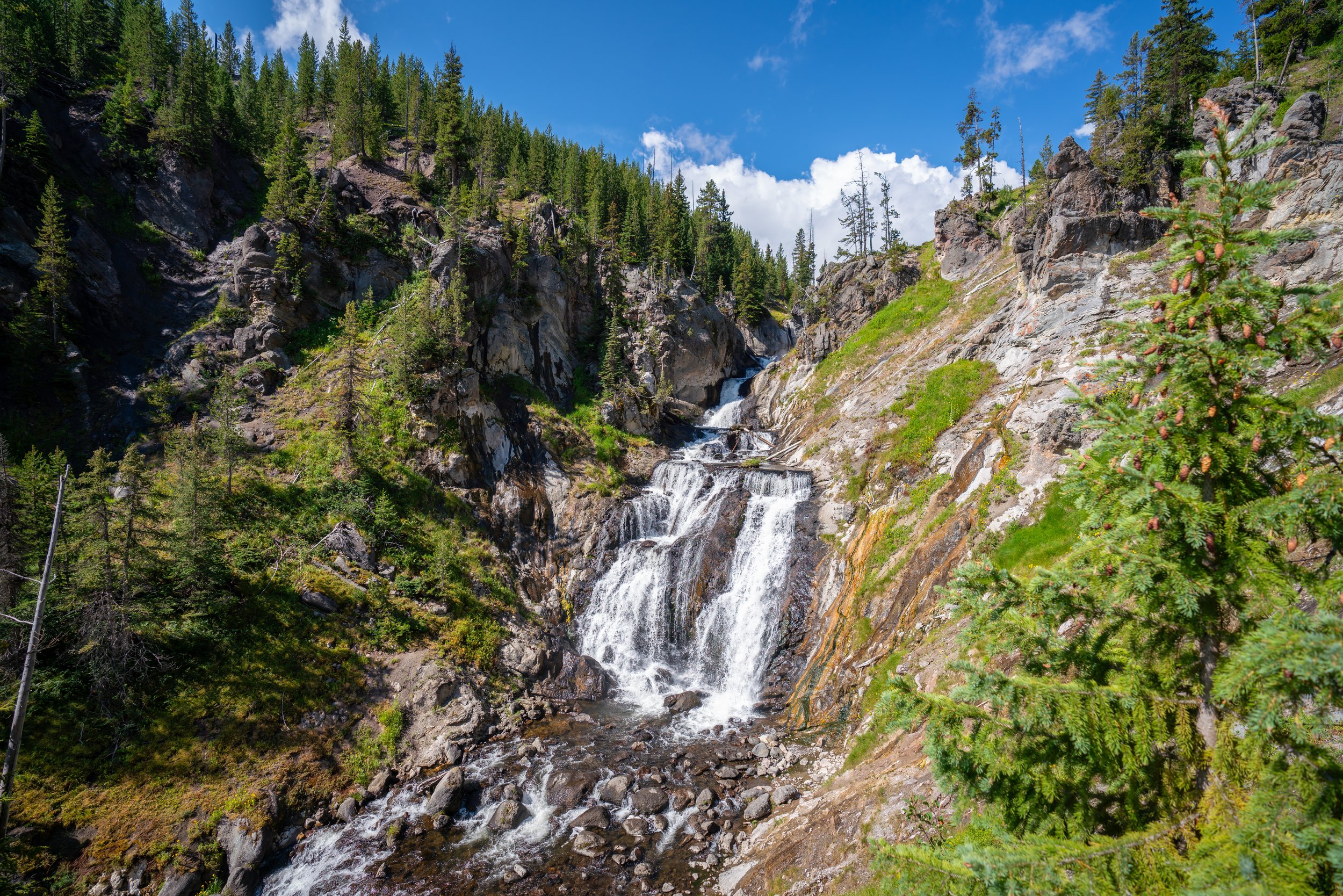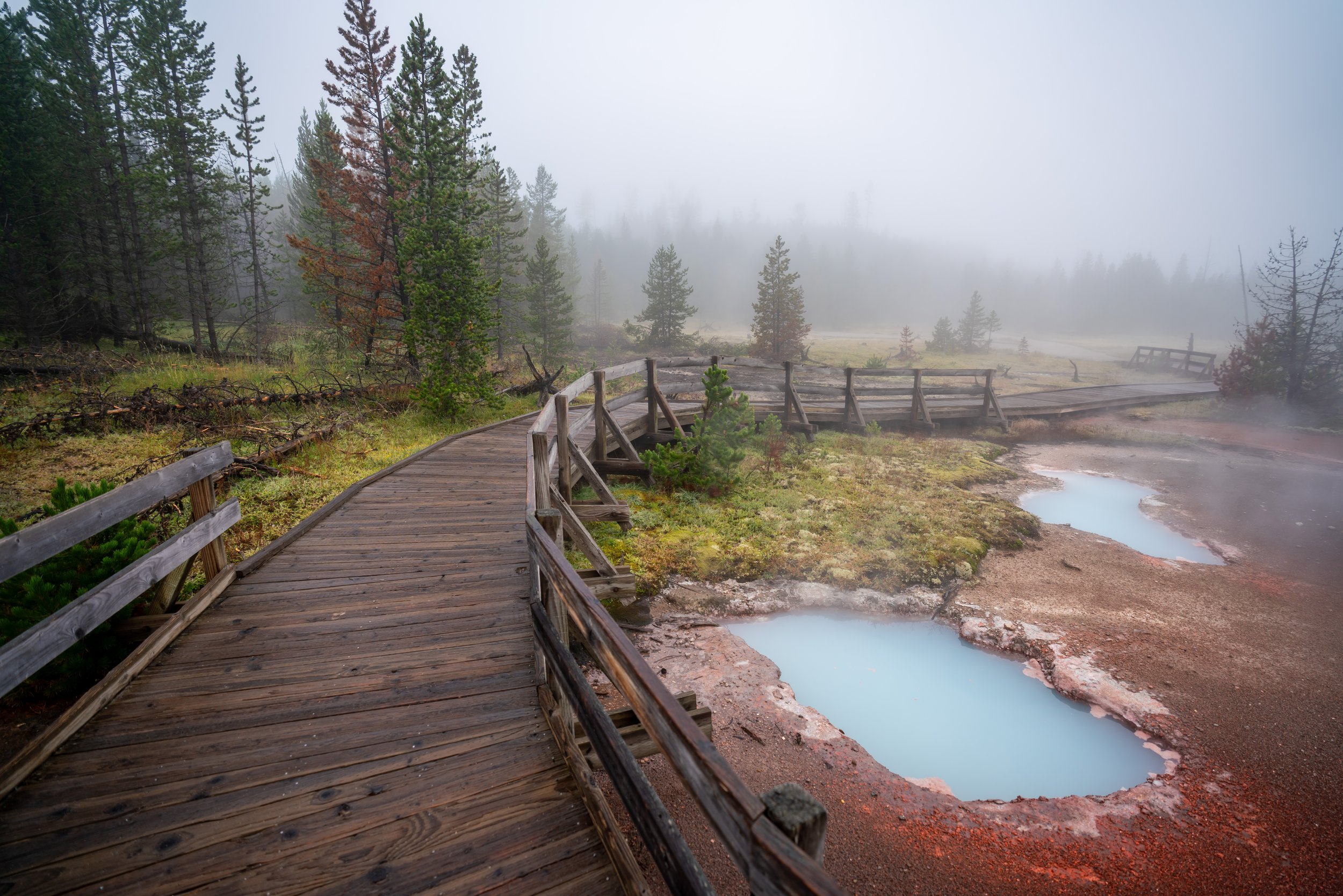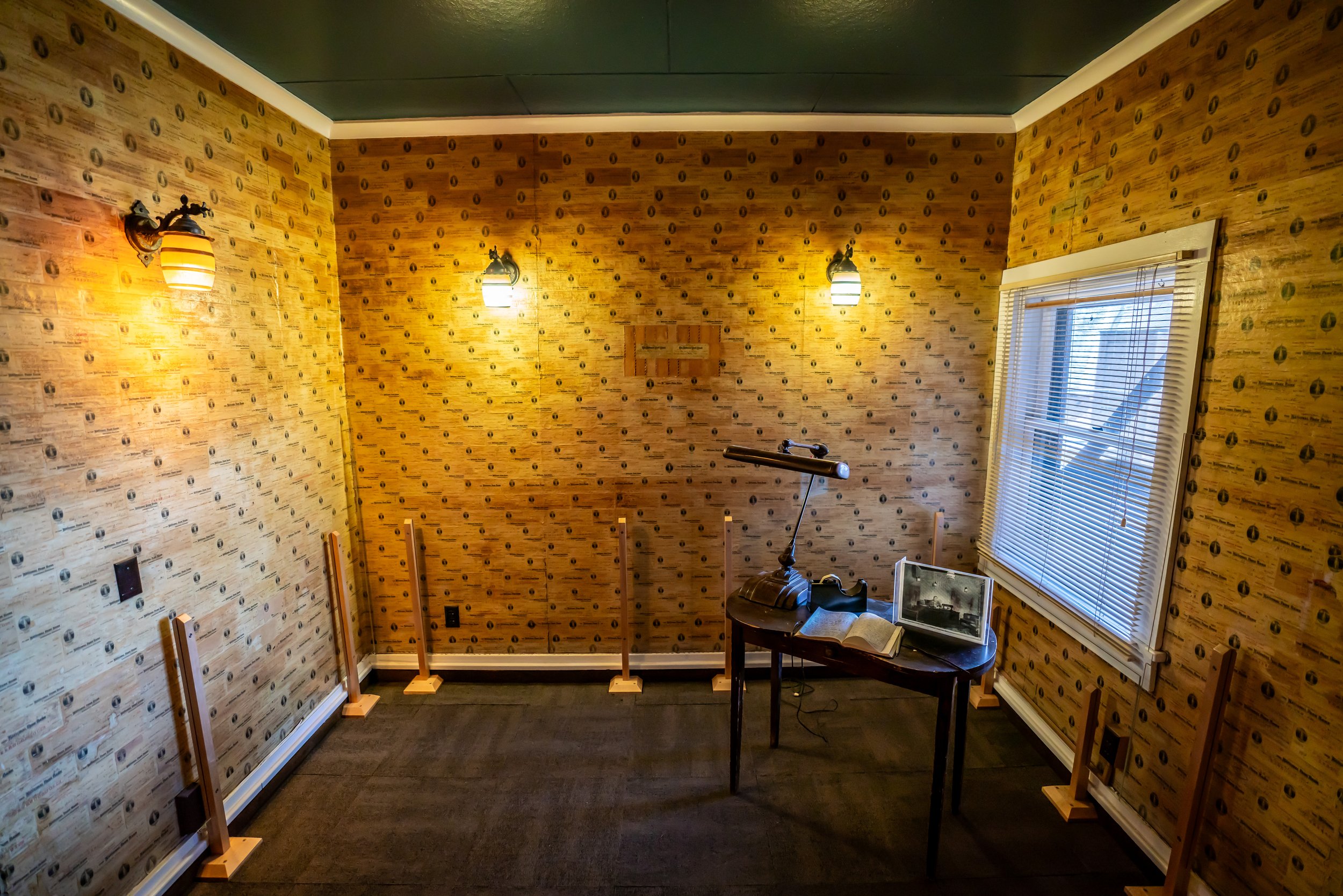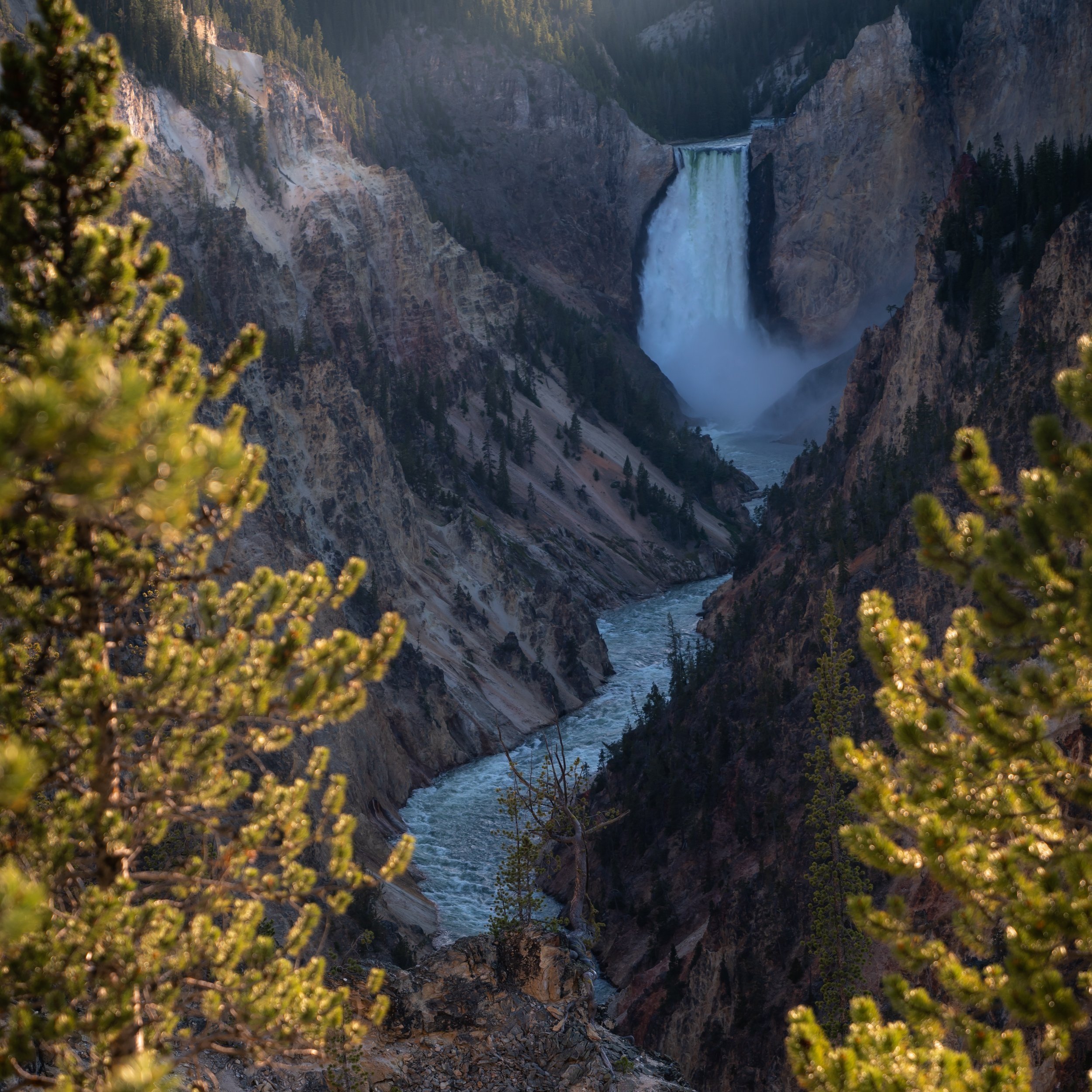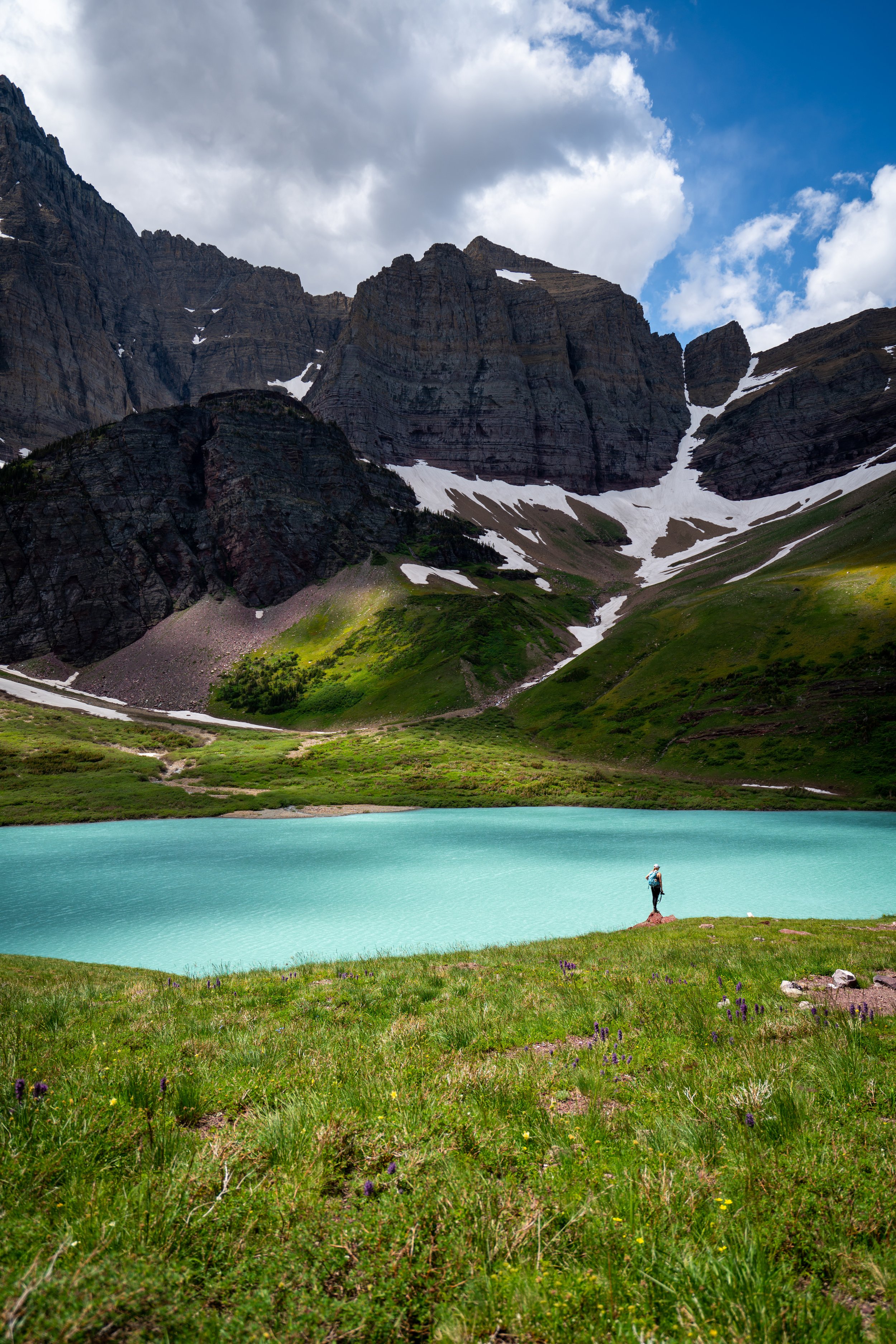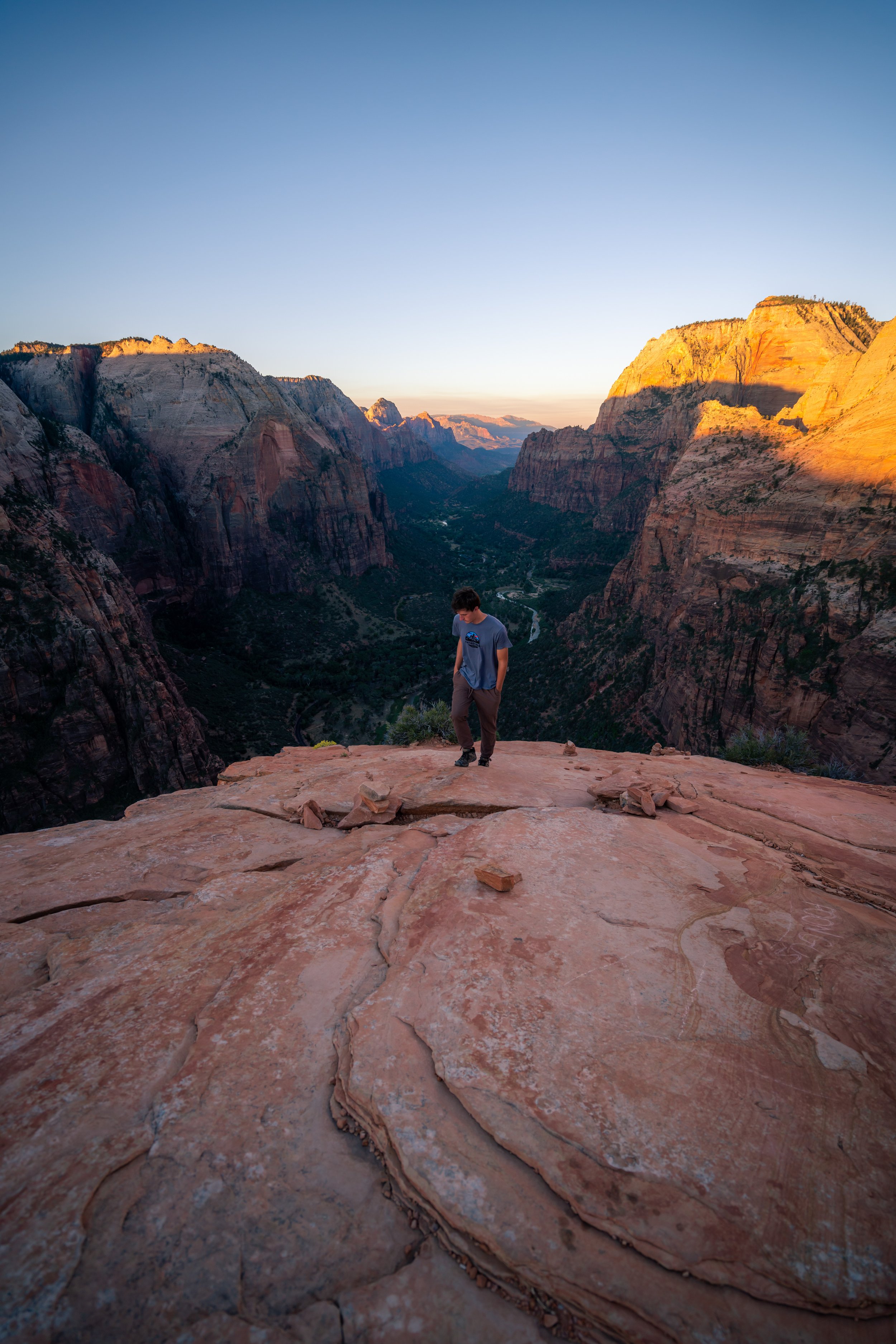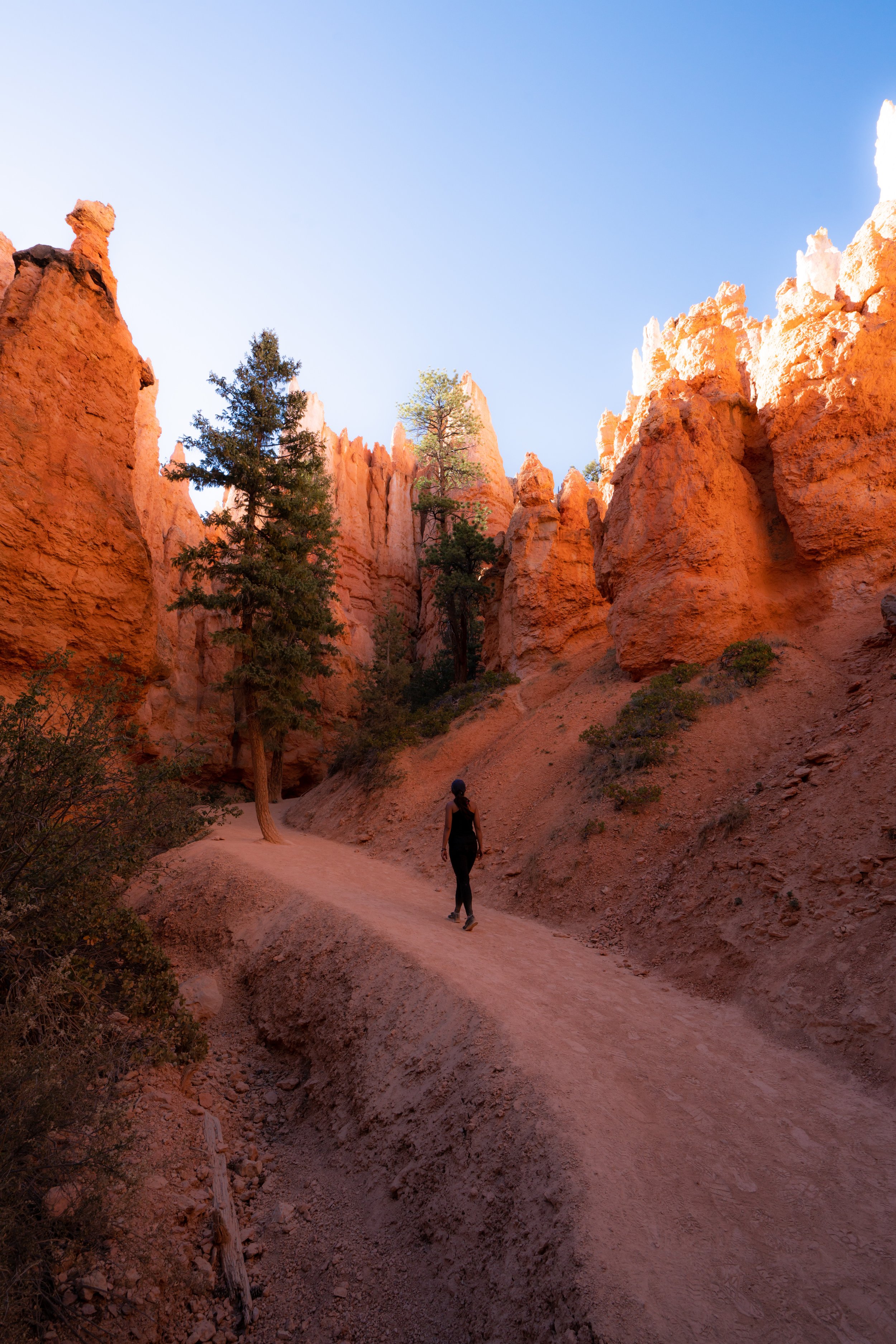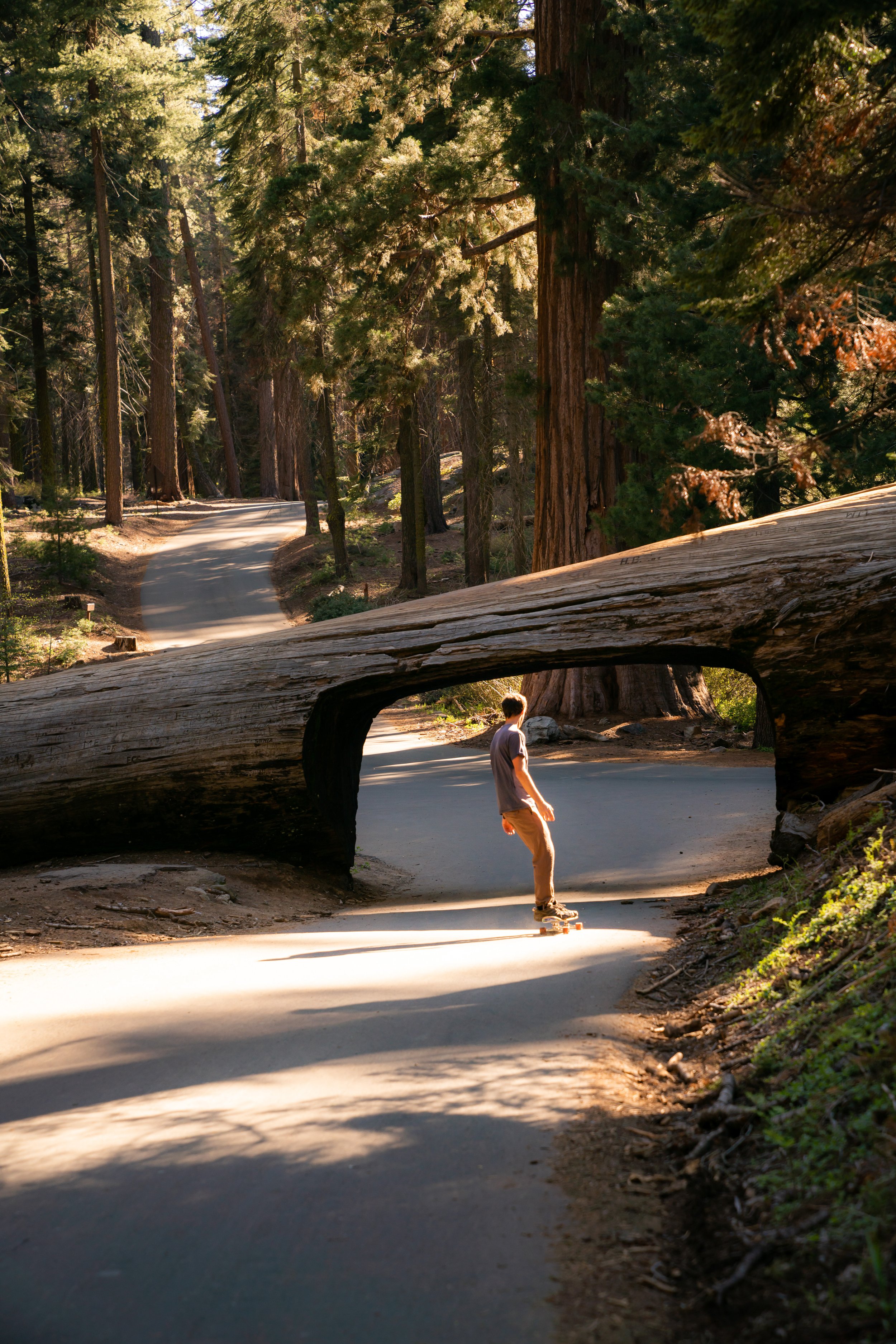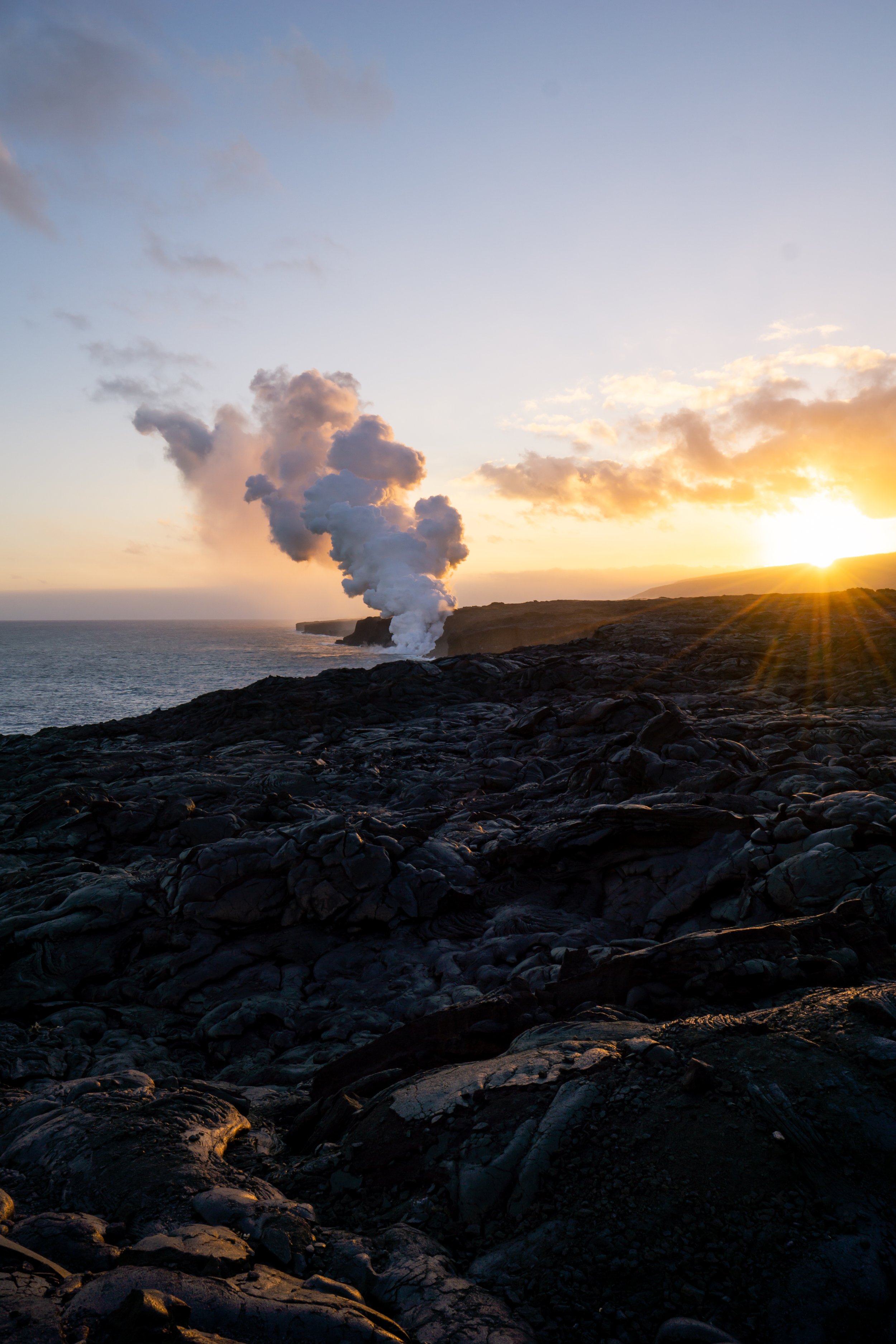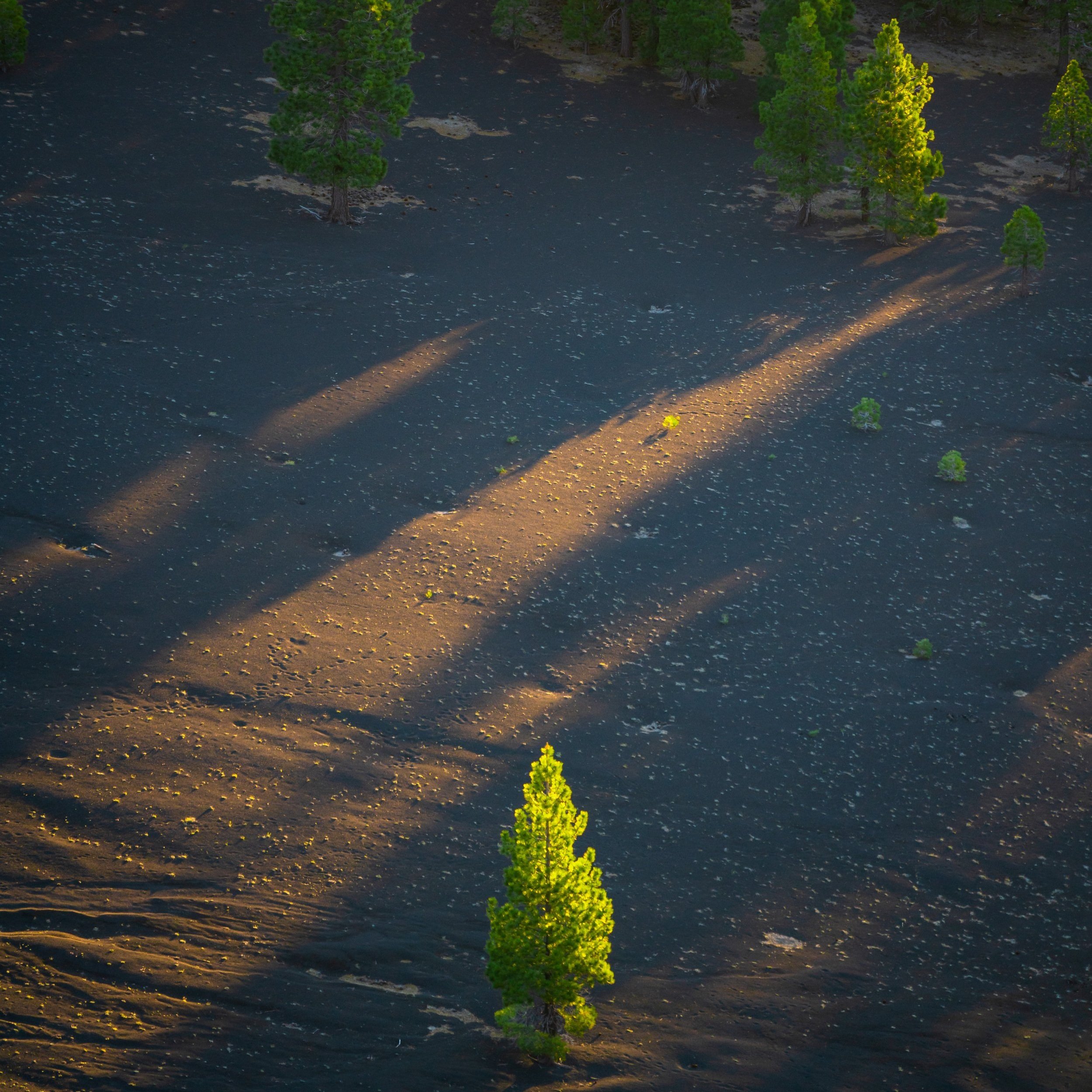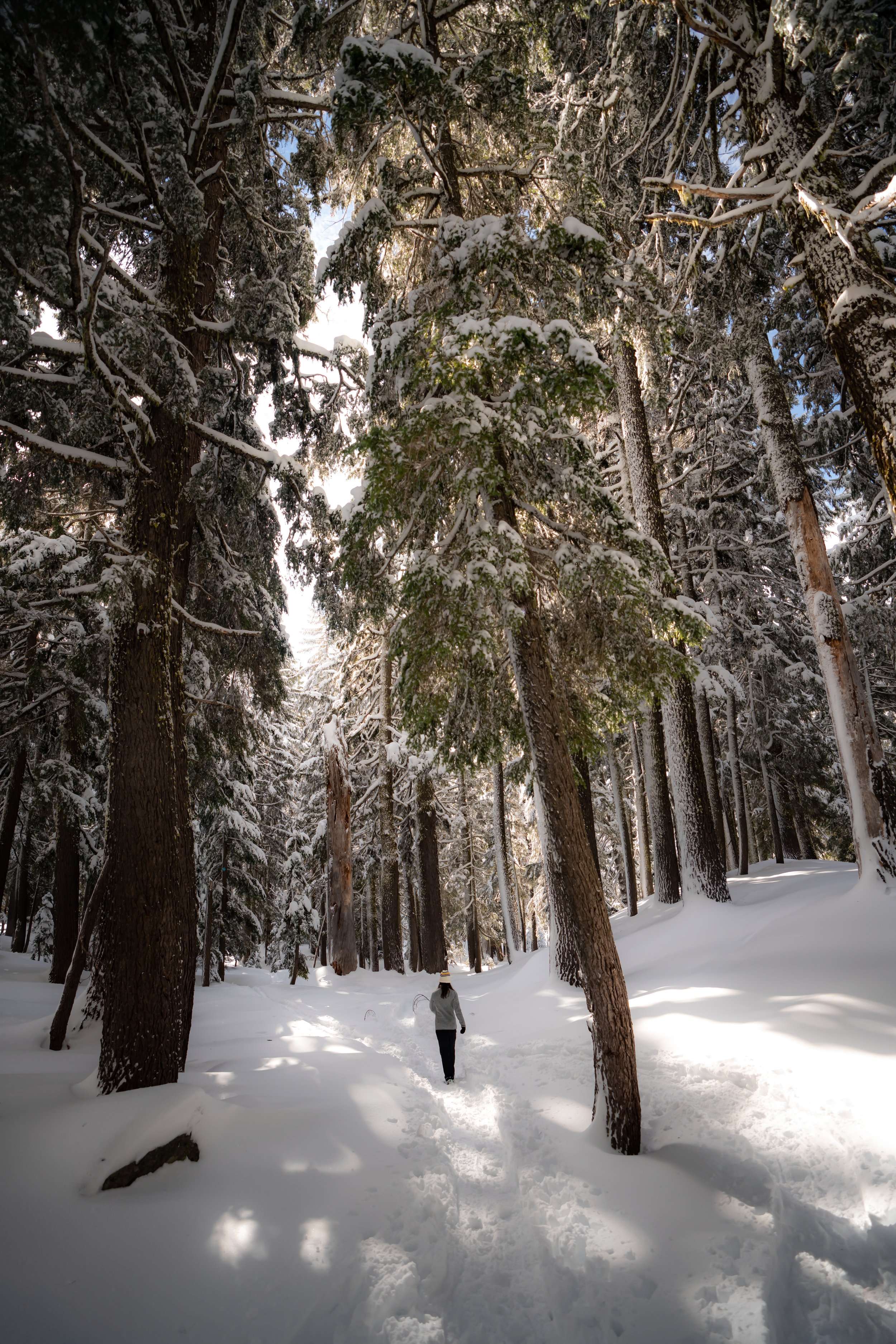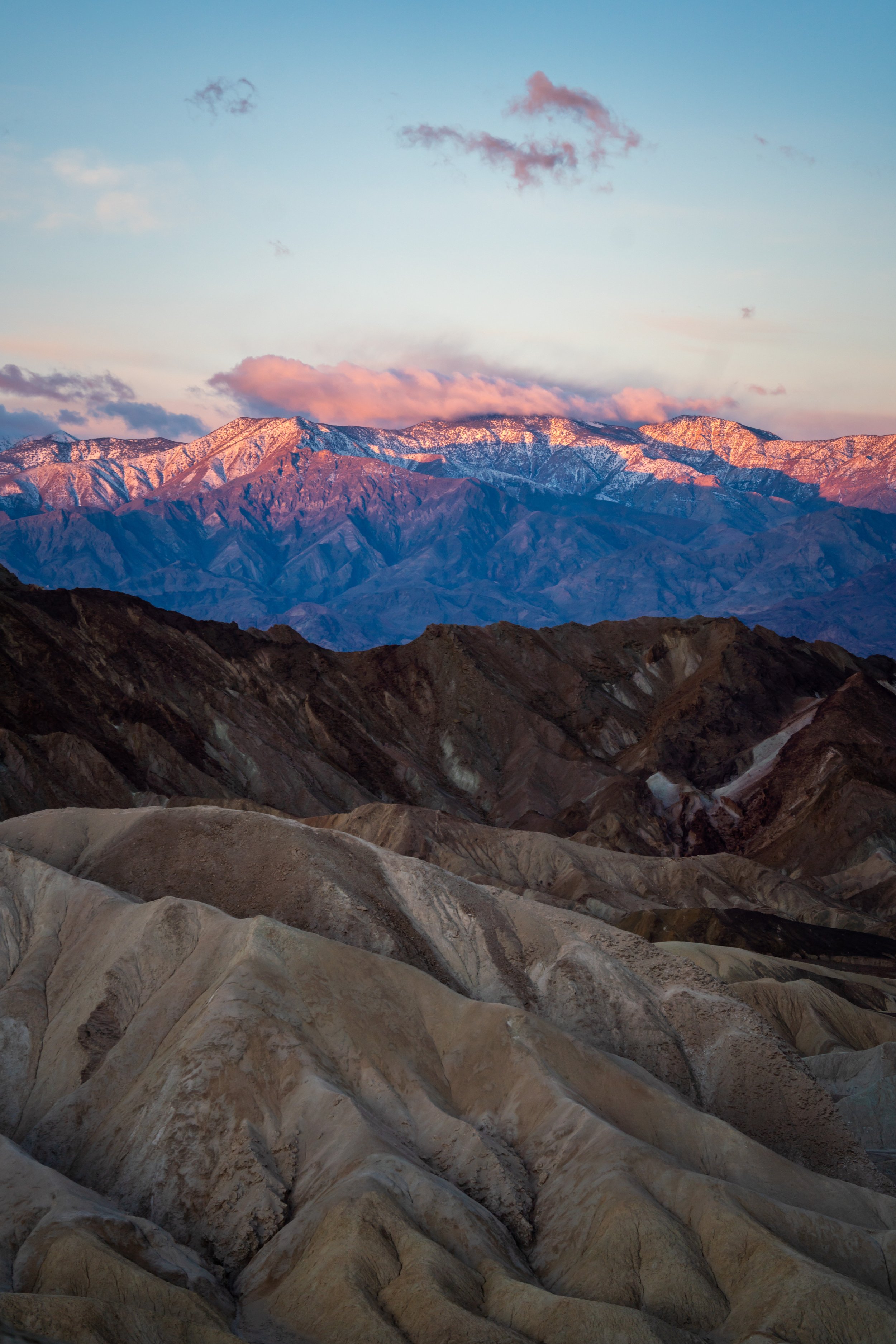Hiking the Norris Geyser Basin Trail in Yellowstone National Park
Distance: 2.9 miles / 4.7 km
Encompassing nearly 3.0 miles (4.8 km) of boardwalks and trails, the Norris Geyser Basin in Yellowstone National Park is one of the largest thermal areas that visitors can explore!
That being said, there are 193 individual geysers found throughout the Norris Basin, which can seem overwhelming to try and see them all—especially because the Norris Geyser Basin Trail is not laid out with one easy direction to follow.
However, there is one best route to hike in order to see the best of the Norris Geyser Basin, while avoiding repeating sections previously hiked, and that is exactly the route shown in this post.
Norris Geyser Basin Trailhead Parking
Since the Norris Geyser Basin is so popular, I recommend arriving first thing in the morning to not only enjoy the boardwalks with fewer people but also to find parking without issue.
By mid-morning on most nice summer days, the parking lot will fill completely, meaning the best way to find a spot may be waiting for someone else to leave.
Additionally, the warning sign below is not for theft; rather, when the elusive Steamboat Geyser erupts, it can damage vehicles parked at the trailhead.
Google Maps Directions: Norris Geyser Basin
Hiking Checklist - Yellowstone-Tetons
Here is a complete list of must-have things that you will want for any hike in the Yellowstone-Teton area.
Bear Spray & Holster - If you aren’t flying, don’t rent bear spray! It’s a waste of money. Prepare ahead of time by buying your own, as this may be one of the most important items on this list.
Osprey 3L Water Bladder - The Osprey 3L water bladder is the most universal hiking and backpacking water bladder on the market, and it’s my go-to because of the slide-off seal that allows it to be quickly filled from the top. Additionally, individual parts are easily replaceable, such as the bite valve.
Black Diamond Headlamp - Personally, I recommend the Black Diamond Storm because it is one of the brightest, lightest, and longest-lasting headlamps on the market—and trust me, the weight-to-battery-life ratio really does matter!
Hiking / Trail Running Shoes - Depending on the type of trail, I prefer to use either the Keen Targhee for longer, more rugged hiking or the HOKA Zinal Trail-Running Shoe for lighter, less intense trails. In either case, both have been amazing to me for many years across countless environments, and both can be found in men’s and women’s sizes. - (Men’s Keen / Women’s Keen) (Men’s HOKA / Women’s HOKA)
Blister / Heel Protectors - I swear by these cheap, amazing heel protectors to prevent blisters for nearly every kind of hiking and backpacking that I do!
Waterproof Rain Shell - You never know when it may rain, and I’ve learned over the years that a rain shell is far better than a rain jacket. By this, I mean that it’s best to have something that the water will roll right off of, which is why I recommend the Patagonia Torrentshell 3L available in both men’s and women’s sizes.
High SPF Sunscreen - Packing high-SPF sunscreen is a must for long days outside!
Hiking the Norris Geyser Basin Trail
If you take my recommendation and hike through the Norris Geyser Basin early in the morning, then hiking with bear spray is more necessary than busier times of the day.
Norris Geyser Basin Museum & Book Store
Initially, the trail passes by the Norris Geyser Basin Museum and Book Store, which is where you’ll need to decide whether to hike through the Black Sand or Porcelain Basin first.
I chose the Bland Sand Basin, which is where the infamous Steamboat Geyser is located.
Black Basin
The most typical way to hike the Black Sand Basin Loop is by going left toward the Steamboat Geyser first.
This is also the most seamless way to continue on to the Porcelain Basin without having to backtrack toward the museum.
Steamboat Geyser
The date on the sign occurred more than two months before this visit, but there must have been some lucky visitors that got to see this elusive eruption!
After the boardwalk descends down to the bottom of the basin, I highly recommend going left, as the trail to the right skips most of what there is to see at the bottom of the Black Sand Geyser Basin.
There are a few pools and geysers to see on this short stretch, but they are very easy to visit on the hike back out.
If accessibility is a concern, note that the boardwalks through the Black Sand Basin are not continuous.
On the far side of the Black Sand Basin Loop, the trail meets back up with the shortcut that I mentioned earlier.
If you’re interested in seeing the rest of the Black Sand Basin, go right, as it’s a fairly short out-and-back walk to see the remaining geysers and pools.
Porcelain Basin Junction
At the end of the Black Sand Basin Loop, the trail seamlessly continues on to the smaller side of the Norris Geyser Basin known as the Porcelain Basin.
At the split in the photo below go left for the Porcelain Geyser Basin, which is also the shortest way back to the parking area.
Porcelain Basin
At the next split, the trail descends down to the Porcelain Basin on the left, and the Norris Geyser Basin Museum can be found on the right.
If you’ve followed the trail the same way as I have shown in this post, I recommend going left first for the best and easiest route through the Porcelain Basin without too much backtracking, if at all.
On the far side of the Porcelain Basin, you can either go straight to hike the shortest route back to the museum or left to see most of the remaining thermal features.
I chose to go left.
This right turn completes the loop back to the Norris Geyser Basin Museum.
Even on a morning in mid-August, the trees were already starting to see frost!
Warning
Afternoon thunderstorms in high Mountain West areas, such as this, are a serious concern during the summer monsoon season.
Even if the weather forecast doesn’t predict any storms, I can tell you from personal experience that they may show up out of nowhere and can put you and your entire group in a very dangerous situation.
I say this to emphasize the importance of turning around at the first sign of lightning, thunder, or even heavy cloud buildup. However, if you ever get caught in a storm unsuspectingly, follow the steps linked below to reduce the risk of getting struck.
U.S. Forest Service: Lightning Safety Tips
More Yellowstone Adventures
If you’re interested in reading about some more amazing adventures within Yellowstone National Park, check out my separate posts below!
Best Way to Find Places to Stay!
Wherever I travel, I love to start my search for places to stay on VRBO.
Even if I don’t end up booking through them, I think it’s one of the best ways to see what’s in the area!
Best Way to Book Rental Cars!
I travel quite a bit, and I know firsthand that finding a good rental car deal can be a challenge, but that’s why I recommend comparing all of your options with Discover Cars.
In short, Discover Cars is a well-known, reputable business that allows you to search for the best deal across companies, and they have the best full-refund cancellation policy I’ve ever seen, valid up to 72, or sometimes even 48, hours prior to your reservation!
Book Here: Discover Cars
Safety
From personal experience, I’ve seen that the Yellowstone-Teton area has one of the highest Grizzly Bear densities in the country. Even on the popular trails, you need to be hiking with bear spray and know how to react in the event of a Black or Grizzly Bear encounter.
Aside from wildlife, Wyoming, like any Mountain West state, is known for its violent afternoon thunderstorms, which are more typical in the warmer summer months than other times of the year.
That said, it’s important to check the local forecast before setting off on any adventure, as lightning strikes are not uncommon in and near mountain ranges across the West. I have personally been knocked to the ground by a strike that hit near me in the past, and I confidently say that it’s an experience you don’t want to live through. This is why I highly recommend checking Mountain Forecast for any high-elevation adventures you may be interested in—especially when climbing a summit.
Finally, know that when micro-spikes are necessary for an early-season adventure, micro-spikes are never supposed to be a substitute for conditions that require crampons.
As always, find the most up-to-date information and conditions on the official Yellowstone and Grand Teton National Park websites.
National Park Service: Grand Teton National Park / Yellowstone National Park
U.S. National Parks Pass
Did you know that the same America the Beautiful Pass that grants access to all 63 U.S. National Parks can be purchased in advance at REI?
Yes, you can save time when you arrive by purchasing your National Park pass, along with your other outdoor gear, at REI before traveling to the park!
More U.S. National Parks
If you’d like to read more about some of my best recommendations when visiting other U.S. National Parks, check out some of my other posts below!
Disclaimer
All information provided on this blog is for informational purposes only and is not intended to be a substitute for information or advice from qualified professionals or managing agencies.
Noah Lang Photography LLC makes no representations or warranties regarding the accuracy or completeness of the information provided here, and readers should use their own discretion, judgement, and seek professional advice where it is appropriate.
Furthermore, Noah Lang Photography LLC shall not be held responsible for any injuries, lost individuals, or legal issues arising from the use of information provided on this website, and if applicable, the above safety disclaimer should be referenced to provide a generic overview of the risks involved.
All said, the content on this blog is for the sole use of Noah Lang Photography LLC, and unauthorized use or reproduction of this content is strictly prohibited.
Disclosure
This post is not sponsored.
However, some of the links in this post are affiliate links, which means that I may earn a small commission if a purchase is made through one of those links. This commission comes at no additional cost to you, and I only recommend products that I personally use and believe will add value to my readers. Thank you for your support, which enables me to continue creating more!
To read the full privacy policy, click here.
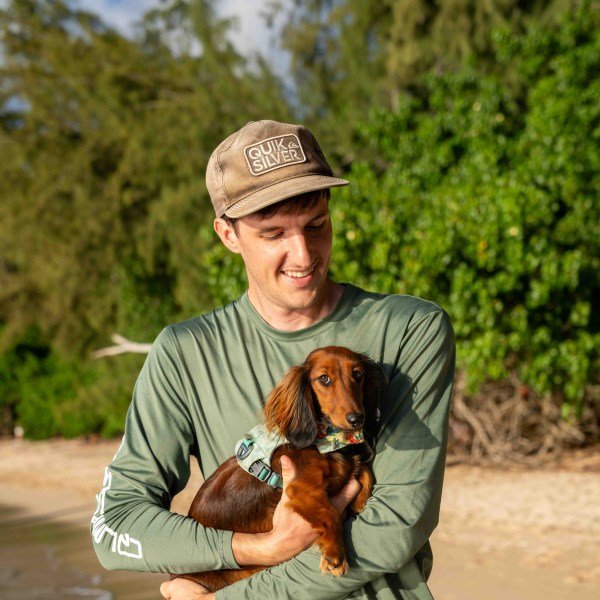
About This Blog
Noah Lang Photography, also known as @noahawaii, is 100% reader-supported!
I do not accept guest articles or sponsored content of any kind on my blog, which is why, if you enjoy the outdoor and travel content I create, please consider buying me a coffee!
I appreciate your support, which helps me continue to keep this blog alive!











